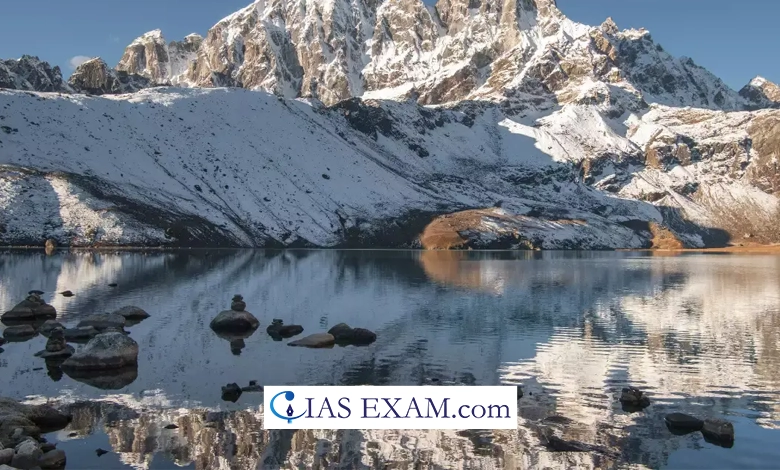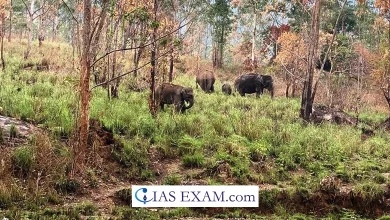Daily Current Affairs for UPSC
Expanding Glacial Lakes in the Himalayas
Syllabus- Geography [GS Paper-1]

Context
The recent satellite monitoring shows 27% glacial lakes in the Himalayas expanding.
Key Highlights
- Research conducted worldwide has always proven that glaciers throughout the globe have been experiencing unheard of prices of retreat and thinning as the onset of the Industrial Revolution in the 18th century.
- This retreat results in the formation of recent lakes and the enlargement of recent ones in the Himalayan region.
- These bodies of water, created by the melting of glaciers, are referred to as glacial lakes.
- The glacial lakes are classified based on their formation process into four extensive categories, particularly
- Moraine-dammed (water dammed by using moraine),
- Ice-dammed (water bridged by ice),
- Erosion (water dammed in depressions shaped by erosion), and different glacial lakes.
- The glacial lakes are classified based on their formation process into four extensive categories, particularly
- Among the 676 increasing lakes, the most of them are Moraine-dammed (307) accompanied through Erosion (265), different (96), and Ice-dammed (8) glacial lakes, respectively.
- They play a critical role as freshwater assets for rivers in the Himalayan region.
Risks
- They pose substantial risks, which includes Glacial Lake Outburst Floods (GLOFs), that could have devastating results for groups downstream.
- GLOFs occur while glacial lakes launch big volumes of meltwater due to the failure of natural dams, including those products of moraine or ice, resulting in surprising and intense flooding downstream.
- These dam failures can be brought on by different factors, which include avalanches of ice or rock, intense climate activities, and other environmental factors.
- Monitoring and reading the prevalence and expansion of glacial lakes inside the Himalayan location is hard because of inaccessible and rugged terrain.
Findings of recent study
- The Indian Space Research Organisation’s (ISRO) lengthy-term satellite tv for pc imagery covering the catchments of Indian Himalayan river basins from 1984 to 2023 have shown sizable increase in glacial lakes.
- According to the ISRO, of the 2,431 lakes larger than 10 hectares identified during 2016-17, 676 glacial lakes have dramatically extended since 1984.
- Specifically, a hundred thirty of those lakes are located within India, with 65,758 lakes located in the Indus, Ganga, and Brahmaputra River basins, respectively.
- Of these lakes 601 lakes (89%) have elevated greater than two times, 10 lakes have grown between 1.5 to 2 times and 65 lakes 1.5 times.
Importance of new study
- Satellite remote sensing technology proves to be an extremely good device for inventory and tracking due to its huge insurance and revisit capability.
- Assessing long-term adjustments in glacial lakes is important for information glacier retreat costs, assessing GLOF risks, and gaining insights into climate change influences.
- It provides treasured insights for understanding glacial lake dynamics, which are important for assessing environmental effects and growing techniques for Glacial Lake Outburst Floods (GLOF) hazard management and climate change variation in glacial environments.
Source: The Indian Express
UPSC Mains Practice Question
Q.The expansion of glacial lakes in the Indian Himalayas has significant implications for both local communities as well as broader climate change adaptation strategies. Examine. (150 words)





.png)



